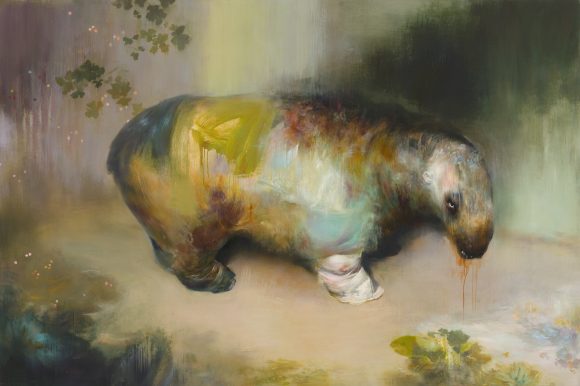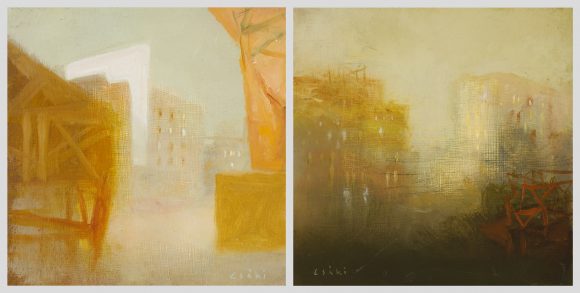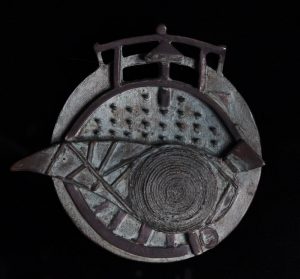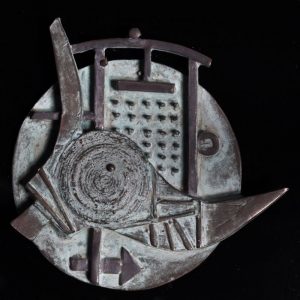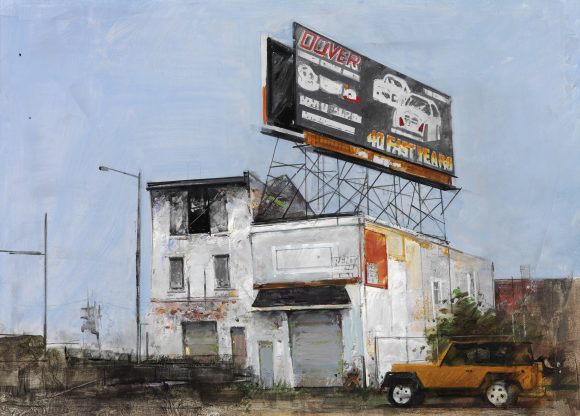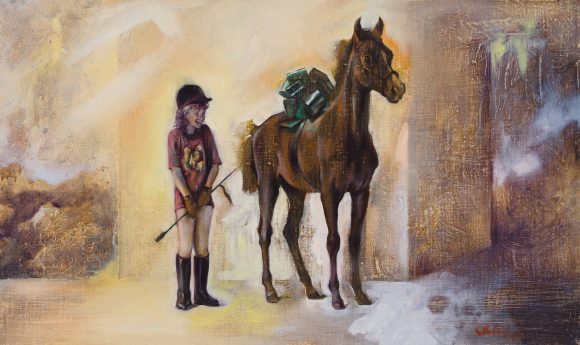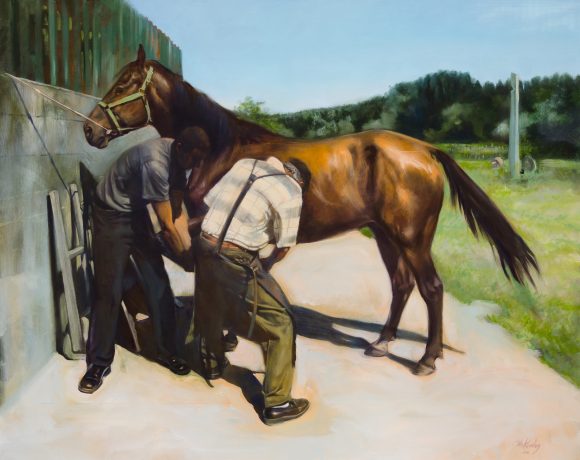On „Saturnus” by Róbert Csáki we meet with a strange creature. It posseses with animal and human features at the same time, and because of it’s name we can’t forget about the godlike temper either. According to mythology, Saturnus ate his own children, because they meant danger to his power. In the representation of Rubens or Goya in the eye of the god is unrelenting craze, while he is transacting his terrible action. Saturnus by Róbert Csáki is different. Though the blood guttering from his mouth tells of sin, his visage – if the viewer is able to stand it – suggests repetance. This eye is almost ruling the painting’s spell-binder spectacle. Csáki placed Saturnus into a misty landscape, whose body, because of the variety of colors and touch is like its composed of many matter and aggregate. His beautiful unreality or his stylized surroundings becomes ready for the viewer because of his visage. He looks out of the picture, breaks his closed world. He stands in defencelessness front of us, and so do we in front of him. We know the sin of the creature in Róbert Csákis masterpiece, but his trenchant visage tells, that he may knows our sins too. Let him be a being of a sphere far from us, his strangeness becomes familiar, even friendly if we are looking at him long enough, and his visage reflects us like a mirror.
photo: Misi
written by: Zsófi Máté
Saturnus (200x300cm, oil on canvas, 2013)

